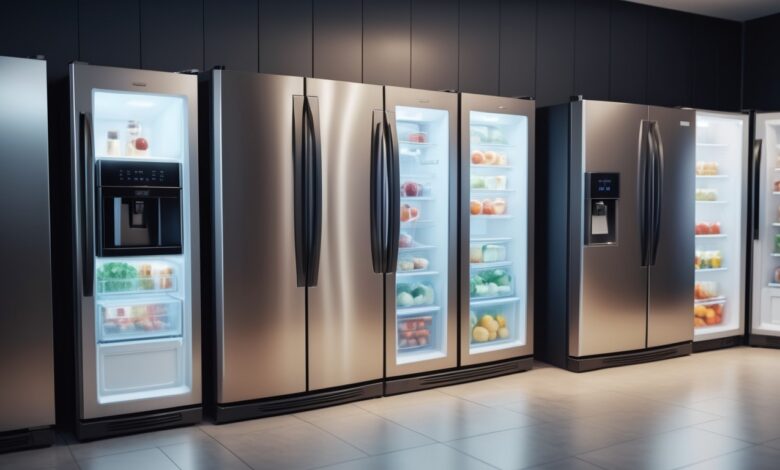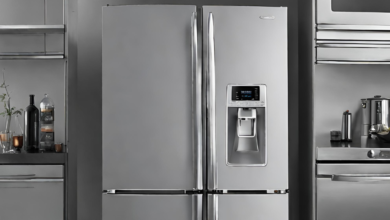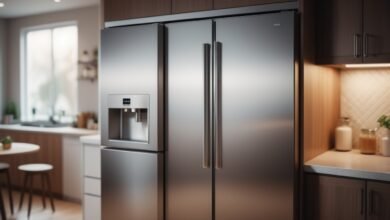Long-Lasting Fridge Maintenance Strategies: A Comprehensive Guide.

The refrigerator is a cornerstone of modern kitchens, ensuring the freshness and longevity of our perishable goods. Given its vital role, it’s essential to implement long-lasting maintenance strategies to not only extend its lifespan but also to optimize its efficiency. In this comprehensive guide, we will delve into various aspects of fridge durability and provide detailed maintenance tips to keep your appliance running smoothly for years to come.
Understanding Fridge Durability
1. Quality of Materials
1.1 Choosing the Right Model
The durability of a refrigerator often begins with the quality of materials used in its construction. When purchasing a new fridge, consider models from reputable brands known for using high-quality materials. Stainless steel exteriors, reinforced glass shelves, and sturdy plastic components contribute to a longer lifespan.
1.2 Inspecting Seals and Gaskets
The integrity of door seals and gaskets plays a crucial role in maintaining a consistent temperature inside the fridge. Regularly inspect these rubber components for signs of wear, cracks, or looseness. Replace any damaged seals promptly to prevent cold air leaks, which can lead to increased energy consumption and strain on the compressor.
2. Optimal Placement and Ventilation
2.1 Proper Installation
Where you place your refrigerator can significantly impact its performance and durability. Ensure proper installation by placing the fridge on a level surface to prevent strain on its components. Allow sufficient space between the back of the appliance and the wall for proper ventilation.
2.2 Ventilation Requirements
Refrigerators dissipate heat through coils located at the back or underneath. Keep these coils clean and unobstructed to facilitate efficient heat exchange. Periodically vacuuming or brushing away dust and debris prevents the compressor from overworking, promoting longevity.
Comprehensive Maintenance Strategies
3. Temperature Management
3.1 Setting the Right Temperature
Maintaining the optimal temperature inside your fridge is crucial for preserving food and maximizing energy efficiency. Set the temperature to around 37°F (3°C) for the refrigerator compartment and 0°F (-18°C) for the freezer. Use an appliance thermometer to verify and adjust settings as needed.
3.2 Defrosting the Freezer
Frost buildup in the freezer can lead to reduced efficiency and increased energy consumption. Regularly defrost your freezer to prevent excessive ice formation on the evaporator coils. This not only improves performance but also extends the lifespan of the compressor.
4. Cleaning and Organization
4.1 Regular Interior Cleaning
Maintain a clean interior by removing expired items, spills, and crumbs. Wipe down shelves, drawers, and walls with a mild detergent solution. This not only ensures a hygienic environment but also prevents the growth of mold and bacteria that can compromise the appliance’s longevity.
4.2 Exterior Maintenance
Clean the exterior of your refrigerator with a soft cloth and a mixture of mild soap and water. Avoid abrasive cleaners that can damage the finish. Pay attention to handles, buttons, and the water dispenser area. Regular cleaning not only enhances the aesthetics but also protects against premature wear.
5. Efficient Use of Space
5.1 Avoid Overloading
Overloading your refrigerator can strain its components, leading to increased wear and tear. Follow recommended storage guidelines and avoid blocking air vents, as proper airflow is crucial for maintaining consistent temperatures.
5.2 Smart Organization
Organize items efficiently to reduce the time the door is open. This minimizes temperature fluctuations and eases the workload on the compressor. Use designated compartments for specific food categories and consider using storage bins for easy access.
6. Routine Inspection and Repairs
6.1 Scheduled Check-ups
Implement a routine inspection schedule to identify potential issues early on. Check for unusual sounds, temperature fluctuations, or leaks. If you notice any problems, schedule a professional inspection to address the issue promptly.
6.2 DIY Repairs
Learn to perform basic DIY repairs, such as replacing a faulty thermostat or a worn-out door seal. Refer to the manufacturer’s manual for guidance, and always disconnect the appliance from power before attempting any repairs. For complex issues, seek professional help to avoid causing further damage.
7. Power Consumption Management
7.1 Energy-Efficient Appliances
Investing in an energy-efficient refrigerator not only reduces your utility bills but also contributes to the appliance’s longevity. Look for models with ENERGY STAR certification, indicating adherence to stringent energy efficiency standards.
7.2 Power Surge Protection
Power surges can damage sensitive electronic components in your fridge. Protect your appliance by using a surge protector or by connecting it to a dedicated circuit. This simple step can prevent costly repairs and extend the overall lifespan.
Conclusion
By understanding the factors that contribute to refrigerator durability and implementing a comprehensive maintenance routine, you can ensure that your appliance serves you well for years to come. From choosing a high-quality model to practicing efficient space management and conducting routine inspections, these strategies will not only extend the lifespan of your fridge but also optimize its performance, ultimately saving you money and reducing your environmental impact.






